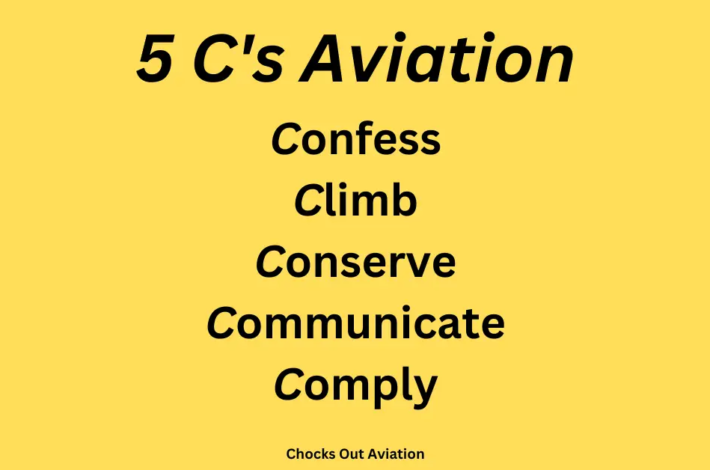
In the fast-paced and dynamic world of aviation, safety is of paramount importance. Pilots and air traffic controllers rely on a set of well-defined procedures to ensure safe and efficient operations. One critical aspect is the management of emergency situations, where the implementation of “Lost Procedures” becomes crucial. In this article, we will explore the concept of Lost Procedures in aviation, specifically focusing on the five Cs: Confess, Climb, Conserve, Communicate, and Comply. These procedures outline the necessary steps to mitigate risks and ensure the safety of passengers and crew in challenging circumstances.
Confess: Acknowledging an Issue
What is the Confess Procedure?
The Confess Procedure marks the initial step when an aviation professional encounters an unexpected situation or problem. It emphasizes the importance of acknowledging the issue openly and honestly. Whether it’s a mechanical failure, adverse weather conditions, or an unexpected deviation from the flight plan, pilots must promptly admit and accept the existence of the problem.
Why is the Confess Procedure Essential?
By embracing the Confess Procedure, pilots create a culture of transparency and accountability within the aviation industry. Promptly recognizing and communicating a problem allows for timely intervention and appropriate action. This helps prevent the situation from escalating into a more dangerous scenario.
Climb: Gaining Altitude and Analyzing the Situation
What is the Climb Procedure?
The Climb Procedure involves gaining altitude to improve aircraft performance and create a buffer between the aircraft and potential hazards. During this stage, pilots focus on gathering information, analyzing the situation, and making informed decisions based on available resources.
The Importance of the Climb Procedure
Climbing to a safer altitude provides pilots with a clearer perspective and additional time to assess the situation. By gaining altitude, pilots can also avoid obstacles, adverse weather conditions, and other potential threats. This procedure allows for a more comprehensive understanding of the problem at hand.
Conserve: Managing Resources Efficiently
What is the Conserve Procedure?
The Conserve Procedure highlights the importance of resource management during an emergency situation. This includes fuel, electrical power, hydraulic systems, and other critical resources. Pilots must prioritize and conserve these resources to ensure their availability for the duration of the incident.
Why is the Conserve Procedure Vital?
Efficient resource management is crucial for the safe resolution of emergency situations. By conserving resources, pilots can extend their flight endurance, maintain essential systems, and increase the likelihood of a successful outcome. This procedure helps prevent unnecessary risks associated with resource depletion.
Communicate: Sharing Information and Seeking Assistance
What is the Communicate Procedure?
The Communicate Procedure emphasizes the significance of effective communication during an emergency. Pilots must promptly relay information to air traffic control, fellow crew members, and relevant authorities. Additionally, they should actively seek assistance or guidance from appropriate sources.
The Importance of the Communicate Procedure
Open and accurate communication plays a vital role in mitigating risks and ensuring a coordinated response. By sharing information, pilots can benefit from the expertise and support of ground personnel, enabling them to make better-informed decisions. Effective communication is essential for the safe resolution of emergency situations.
Comply: Adhering to Standard Operating Procedures
What is the Comply Procedure?
The Comply Procedure stresses the importance of adhering to established standard operating procedures (SOPs) during emergency scenarios. Pilots must rely on their training, follow established protocols, and implement appropriate measures to address the situation effectively.
Why is the Comply Procedure Critical?
Standard operating procedures are designed to ensure consistent and safe operations. In emergency situations, pilots must adhere to these procedures to maximize their chances of success. By following established protocols, pilots can rely on their training and leverage collective industry experience to make informed decisions.
Frequently Asked Questions
Are Lost Procedures only applicable during in-flight emergencies?
While Lost Procedures primarily apply to in-flight emergencies, they can also be adapted and utilized in various ground scenarios, such as air traffic control operations or airport emergencies.
How are Lost Procedures trained and reinforced within the aviation industry?
Lost Procedures are an integral part of pilot training and recurrent training programs. Aviation regulatory bodies, airlines, and training organizations emphasize the importance of these procedures to ensure proper implementation.
Can Lost Procedures be modified or customized by individual airlines?
While the core principles of Lost Procedures remain consistent, airlines may adapt certain aspects to align with their specific operational requirements. These adaptations must be approved and regulated by aviation authorities.
Are Lost Procedures specific to commercial aviation, or do they apply to general aviation as well?
Lost Procedures are relevant to both commercial aviation and general aviation. The fundamental principles of Confess, Climb, Conserve, Communicate, and Comply can be applied across different aviation sectors.
Are there any ongoing efforts to enhance Lost Procedures in the aviation industry?
The aviation industry is constantly evolving, and safety protocols, including Lost Procedures, are regularly reviewed and updated. Continuous improvement efforts aim to incorporate lessons learned from past incidents and adapt to emerging challenges.
Conclusion
In the high-stakes world of aviation, the implementation of Lost Procedures is essential to ensure the safety of passengers, crew, and aircraft. The Confess, Climb, Conserve, Communicate, and Comply procedures form a comprehensive framework that guides aviation professionals through emergency situations. By acknowledging problems, gaining altitude, managing resources efficiently, communicating effectively, and adhering to established procedures, pilots can navigate challenging circumstances and resolve emergencies with a greater degree of safety and success.